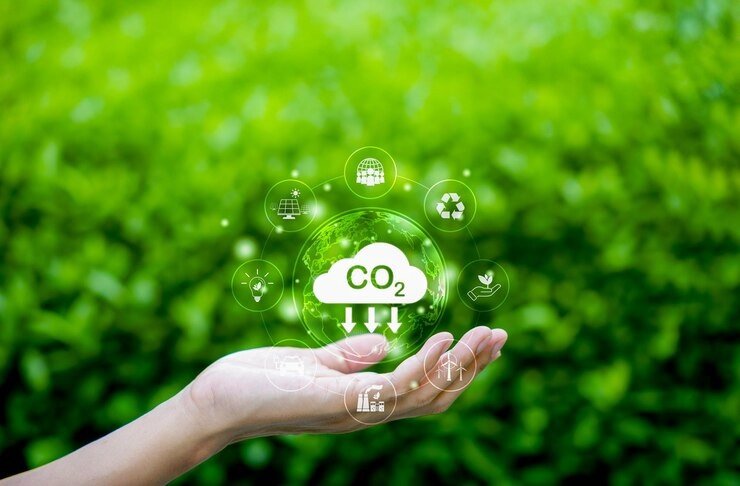Words Yuvraj Bhardwaj
Sustainability is no longer just a hashtag in social media or a headline in news stories but has become a serious issue that we all, including industries, governments, and entrepreneurs, need to seriously act upon. For years, sustainability has been just an environmental issue, but today it has an impact on consumer behavior to industry strategies. Businesses should transform their CSR to actively protect and restore the environment. This could involve reducing their carbon footprint, adopting sustainable practices, and even developing innovative solutions to environmental challenges. Companies need to consider the long-term social and environmental impacts of their decisions and build resilience into their operations to withstand future challenges.
Key Sustainability Trends for 2024 – 2025
- Advancing the Circular Economy: The circular economy aims to minimize waste and promote sustainable use of natural resources through smarter product design, longer use, recycling, and more. It includes the 6 R’s – Reduce, Reuse, Recycle, Refurbishment, Recover, and Repairing of materials. Though India has always had a culture of recycle and reuse, the adoption of a circular economy is more imperative now.
- Scaling Up Renewable Energy Solutions: Renewable energy sources produce fewer greenhouse gas emissions and reduce air and water pollution. The relation between technological advances and the cost of renewable energy is disproportional. The more the technology advances, the cost of renewable energy decreases, making it affordable for consumers.
- Accelerating Decarbonisation: Industries can support sustainability by increasing the amount of clean, renewable energy in the grid, enabling rapid and cost-effective electrification of industries. In the upcoming years, utilities will continue to play a central role in the energy transition by accelerating global decarbonization by replacing fossil fuels with electricity produced from renewable sources, like wind, solar, and hydro.
- Prioritizing Ecosystem Restoration: It can involve a range of activities such as: Planting trees on land that has previously been deforested and re-establishing or enhancing natural habitats for plants and animals, such as wetlands, grasslands, and coral reefs. This also can involve removing invasive species, restoring water flows, and creating suitable nesting sites. Healthy ecosystems play a crucial role in carbon sequestration, helping to mitigate climate change.
- Transparent ESG Practices: Environmental aspects of ESG reporting focus on a company’s efforts to mitigate environmental impact, conserve natural resources, minimize pollution, and promote sustainable raw material sourcing practices. This includes initiatives to reduce carbon emissions, adopt renewable energy sources, implement sustainable waste management practices, and engage suppliers to promote environmental stewardship in the supply chain. By measuring and reporting on environmental performance metrics, companies can assess their ecological footprint, identify areas for improvement, and implement strategies to enhance environmental sustainability.
- Harnessing Technology for Sustainability: The integration of AI in waste management processes, such as collection, transportation, sorting, and recycling have the potential to optimise these processes and improve resource efficiency.
- Tackling E-Waste and Plastic Challenges: India generates 9.3 million tonnes of plastic waste annually, with 40% remaining uncollected. By addressing systemic gaps, adopting innovative technologies, and fostering community participation, India can pave the way for a plastic-free future. A robust commitment to circular economy principles will not only reduce ecological damage but also position India as a global leader in sustainable development.
India’s Role in Leading the Green Wave
India is committing to reach the objective of 500 GW of green energy capacity by the year 2030. In renewable energy production, India holds the 4th position worldwide. We have already achieved the goal of having 40% of the electricity capacity installed from green resources by the year 2030, which was prematurely in November 2021. In the last nine years, the solar energy capacity has increased almost 30 times.
Call to Action
To successfully create a greener future, collaboration across all industries along with governments and citizens has become crucial. Spreading awareness and building strong partnerships can unlock the potential of a climate-friendly, sustainable future. Working together for a better future is no longer an option; it has become a necessity.
For the amount of environmental challenges we face today, the increasing innovation of green technology is the only sustainable solution. We can see how renewable energies such as solar, wind, and geothermal energy are increasingly replacing traditional fossil fuels. Today the increasing usage of LED lighting, smart appliances, and energy-efficient buildings are helping to reduce energy consumption and lower carbon footprints.
The increasing business of Electric vehicles, hybrid cars, and public transportation systems are reducing reliance on fossil fuels and improving air quality. Likewise Advanced recycling technologies and waste-to-energy plants are helping to reduce waste and conserve natural resources. By continuing to invest in research and development, promote the adoption of green technologies, and foster international cooperation, we can create a more sustainable and resilient future for our planet.

About the Author
Yuvraj Bhardwaj, co-founder of Petonic Infotech & Plannex Recycling.
(India CSR)





